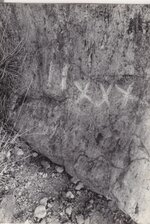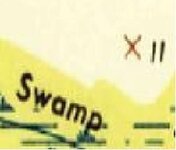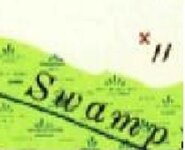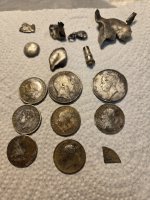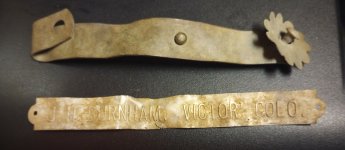joe_dirt
Hero Member
- Jan 15, 2013
- 596
- 665
- Detector(s) used
- Teknetics T2, Makro Pointer
- Primary Interest:
- Relic Hunting
I was looking at some old topo maps from my area and on two different maps of the same location, 1948 and 1958, there's a mark I can't identify. Neither map has a legend so I don't know what all the marks mean. It's a fairly large red "X" followed by two black vertical parallel lines. So it looks something like this X l l. Does anyone know what it might mean? Thanks.








